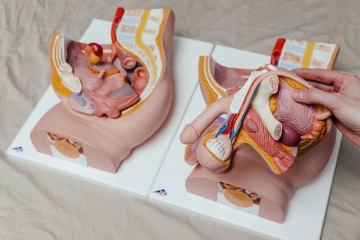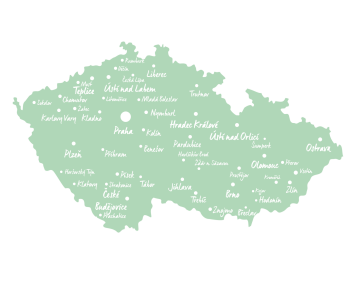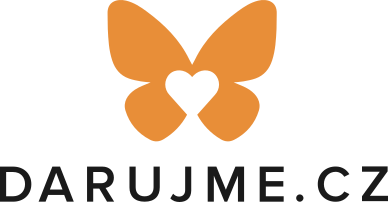Stay negative!
Approach things positively. Don’t forget about condoms and regular HIV tests.
#allgooddownthere
How to stay HIV-negative?
HIV is a virus attacking and weakening the immune system. You can avoid transmission by following means:
- Using condoms (How?)
- Regular testing
- PEP & PrEP (What’s that?)
- Celibacy :-)

1 500 000
New HIV-infected individuals yearly
38 400 000
HIV-positive people worldwide
4 875
HIV-positive people in the Czech Republic
Where do I get tested?
The National Institute of Public Health runs the website with the support of The Ministry of Health. Individual places where you can get tested are:
What’s HIV, and how’s it different from AIDS?
Did you know there are two types of the virus?
It’s HIV-1 and HIV-2, and each comes from different animal species:
- HIV-1 is predominantly spread worldwide and makes up to 98% of all HIV infections
- HIV-2 is the 2% left and is prevalent in West Africa.
How is the virus transmitted?
The virus typically doesn’t survive for long outside the body. There’s a high chance of contracting it from direct contact with the infected person in the acute stage of infection.
The virus can be transmitted via:
- Sex – in any form (straight, gay, vaginal, oral, anal). The highest risk of contracting it is via anal sex because the mucous membrane in the rectum is more prone to damage; therefore, the sores make it easier for the virus to get to the system.
- Blood – needles or even shaving equipment. Every blood donor is tested for HIV, so transfusions should no longer spread the disease.
- From mother to child – in the womb, during birth or breastfeeding. If the woman is not being treated, the risk of transmission is 20%, and it’s only 1% if she regularly takes medication.
High-risk groups
You’ve probably heard that some people are at higher risk of contracting HIV. Such people are:
- Sex workers and their clients
- Intravenous drug users
- Gay men
- Transgender women
The risk is higher for others when they:
- Have a deep cut through where the virus can transmit
- Get a needle prick with a bloody syringe; or when it reaches deeper tissue
What’s AIDS?
It’s a late-stage of HIV infection, and it’s chronic. AIDS stands for:
- Acquired = not a hereditary condition; the person contracts it
- Immune = the immune system’s ability to fight bacteria and viruses decreases significantly
- Deficiency = the immune system can’t function properly
- Syndrome = set of symptoms
What about prevention?
- Celibacy
- Using condoms
- Regular testing
- PEP (post-exposure prophylaxis) – is taken after sex, preferably within 72 hours after possible exposure. If the treatment starts within 4 hours after the sex, the risk decreases by 80% after 4 weeks of taking the medication.
- PrEP (pre-exposure prophylaxis) – is an antiviral medication recommended for people from high-risk groups (multiple sexual partners, anal sex without using a condom or party and play = PnP). The risk can decrease by 99%, but it doesn’t prevent STDs.
What are the symptoms?
After the virus enters the body, the incubation period is 2-6 weeks, but there are also cases where the incubation period reached up to 10 months. Just a few days after the virus enters the body, it begins to multiply in the nodes, and years later it spreads to the lymphatic tissues, where it resides and continues to multiply.
Half of the infected people experience symptoms within 3–8 weeks after infection. The symptoms are nonspecific:
- Fever
- Enlarged lymph nodes
- Sore throat
- Rash
- Weight loss
- Asymptomatic (10–50 % of infected people)
Due to the symptoms being nonspecific or the disease being asymptomatic, it’s hard to diagnose HIV without a test. The immunity gets weaker, and the system has trouble fighting against common and serious infections over time. Affected people are also at higher risk of tumour development.
Serious infections include:
- Type B and C hepatitis
- Tuberculosis
- Pneumonia
When or how to get tested?
The testing should take place 2–3 months after high-risk sexual behaviour. The person should act responsibly during this period – wear condoms or practice celibacy.
Every individual from the high-risk group should get tested regularly. You can get it done even before entering a serious relationship – preferably both of you.
How is it done?
- Rapid test → result in 30 minutes
- Blood test → result in several days
- Self-test kit → sent to a laboratory after
You can get tested anonymously in the Dům světla’s checkpoints.
If the test comes back positive, you’ll have to retake it. The same goes for when the result is indeterminate.
There’s a low probability of being HIV-positive if the results come back negative, and one should get tested again after participating in risky sexual behaviour.
What’s the treatment?
HIV and AIDS in numbers
- AIDS was identified in France in 1982
- The connection between HIV and AIDS was discovered during 1983–1984.
- Around 37 million people worldwide live with HIV.
- Approximately 1,8 million people get infected yearly.
- In 2020, there were 251 cases in the Czech Republic.
- HIV-positive people in the Czech Republic in 2019: 3,590 (2,378 men and 380 women); 18,8 % had AIDS.
- The first HIV isolation came from macaques that had the same symptoms as humans with AIDS.
Workshops and webinars #allgooddownthere
We’ll teach you how to recognise and prevent STDs and tell you where to go if it’s your concern.








